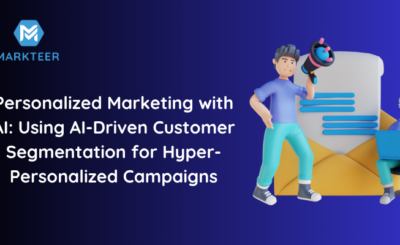Email newsletters remain one of the most powerful ways businesses connect with their audience in today’s digital landscape. When crafted effectively, they can keep subscribers informed, nurture customer relationships, and drive conversions. Yet, with inboxes overflowing, standing out is more challenging than ever. Creating a successful newsletter requires strategic planning, quality content, and an understanding of your readers’ needs.
Ways to Create Email Newsletters for Your Business
This guide will walk you through the essential steps for building an email newsletter that your audience will look forward to reading, helping you turn subscribers into loyal customers.
Define your purpose and audience
The foundation of any effective newsletter is a clear understanding of its purpose and intended audience. Start by asking yourself what you want your newsletter to achieve—do you want to inform, engage, or convert? You may focus on building brand awareness, promoting products, or sharing valuable insights. Once you clarify your goal, identify your target audience and consider their interests, preferences, and challenges. Tailoring your content to meet their needs ensures it feels relevant and engaging, ultimately helping build stronger relationships with your readers.
Craft a compelling subject line
The subject line is the first thing readers see, so it plays a crucial role in whether your email gets opened or ignored. A well-crafted subject line should grab attention without feeling gimmicky. Aim for a concise and punchy format that conveys the email’s value in under 50 characters. Action-oriented language, such as “Discover,” “Boost,” or “Unlock,” can create a sense of curiosity, while personalization by adding the subscriber’s name, enhances relatability. Experiment with A/B testing to find what resonates best, allowing you to refine your approach based on actual results.
Choose the right newsletter format
An effective newsletter format aligns with your business objectives and audience preferences. Some businesses succeed with a curated approach, sharing industry news, recent blog posts, or resources, while others may focus on a single topic, like a product launch or a feature article. Educational newsletters offering tips, tutorials, or guides can provide consistent value. Choosing the format that best suits your goals ensures your newsletter feels cohesive and keeps readers engaged, as they’ll know what to expect from each issue.
Provide value with quality content
Quality content is the heart of any successful newsletter. Readers open your emails expecting value, so focus on content that informs, entertains, or solves problems. Aim to address common challenges your audience faces or offer insider tips to help them achieve their goals. Occasionally, sharing behind-the-scenes insights about your business can foster a personal connection. Whatever the focus, prioritize content that is easy to digest and actionable, helping readers feel that subscribing to your newsletter benefits them in tangible ways.
Keep it visually appealing

An aesthetically pleasing layout keeps readers engaged and enhances the readability of your newsletter. Use a clean, organized design with plenty of whitespace to avoid overwhelming readers. Consistent branding through color schemes, fonts, and logos helps reinforce your brand identity, while visuals like images or infographics can add interest and break up blocks of text. Remember to optimize your layout for mobile devices, as many readers will view your newsletter on their phones. An attractive, easy-to-read design encourages readers to stay engaged and look forward to future issues.
Also Read: 10 Best Email Marketing Campaign Best Practices with CTA
Include strong CTAs
A clear call-to-action (CTA) is essential to encourage readers to take the next step, whether visiting your website, signing up for a webinar, or reading a blog post. Make CTAs direct and action-oriented, using language like “Get Started” or “Learn More.” They should be easy to spot, ideally set apart with contrasting colors or bold fonts to draw attention. Limit the number of CTAs to avoid overwhelming readers, focusing on one or two primary actions that align with your newsletter’s purpose.
Personalize the content
Personalization adds a valuable touch, acknowledging each reader individually and increasing engagement. You can start simply by addressing subscribers by their name, but going further by segmenting your list based on interests or behaviors allows you to send tailored content. Advanced personalization, which includes dynamic content that shows different sections based on subscriber preferences, can make newsletters feel even more relevant. When readers feel that the content is specifically created for them, they are likelier to engage and remain loyal to your brand.
Optimize for deliverability
No matter how well-crafted, a newsletter won’t be effective if it doesn’t reach the inbox. Boost deliverability by following best practices to avoid spam filters. Using a reputable email service provider (ESP) can help, as many ESPs offer built-in tools to optimize delivery rates. Clean your subscriber list regularly to remove inactive users and maintain a healthy sender reputation. Additionally, avoid spam trigger words such as “free” or “discount,” which may send your email to the spam folder. Consistently high deliverability ensures that your message reaches as many subscribers as possible.
Also Read: How to Optimize Email Marketing Performance by Tracking
Measure and improve performance
Analytics are essential for understanding how well your newsletter is performing. Track open rates, CTRs, and conversion rates to gauge reader interest and engagement. High open rates indicate that your subject line is effective, while high CTRs show readers find your content valuable. If you notice a high unsubscribe rate, it may be a signal to review content relevance or frequency. Use these insights to refine your approach, experimenting with different content formats or designs to improve each new issue.
Maintain a consistent schedule
Consistency is key to building a relationship with your readers. Decide on a weekly, bi-weekly, or monthly schedule that suits your business and stick to it. Readers who know when to expect your newsletter are more likely to engage regularly. Additionally, a consistent schedule helps reinforce brand presence and creates anticipation, as readers will come to look forward to your emails. Reliable frequency helps turn subscribers into long-term, loyal customers.
Also Read: What is the Best Time to Send Emails
Set expectations for your subscribers
Like in my earlier example, I opted out because I was not prepared to receive 3 emails a week. If they had set my expectations in the first place, making me aware that I would receive 3 emails a week, I would have either opted in or chosen a single email option.
Please make sure you properly communicate with your customers while they are subscribing to the newsletter. Notify them what information will be included in the newsletter (or provide them alternatives to choose their topic of interest) and how often they should expect it. You can also list the issues from which a subscriber can choose topics of interest. Based on this information, you can create various newsletters (based on interest) and send them accordingly. Customers with a solid attachment to a particular company spend 23% more than average consumers, and the newsletter is a prime solution to distinguish a brand from its competition.





